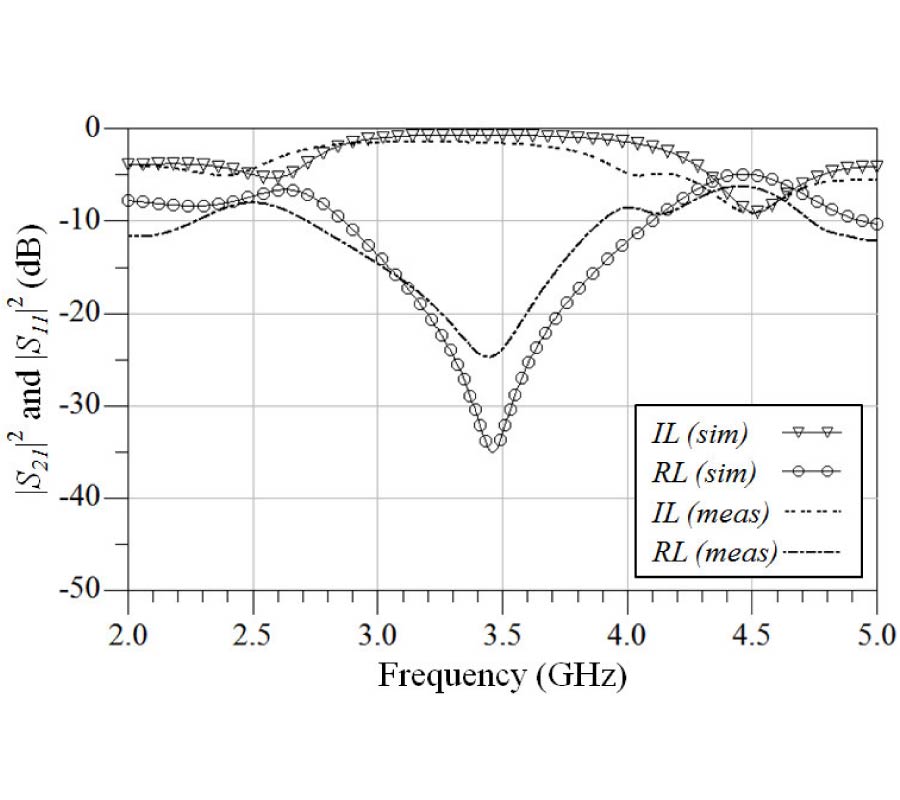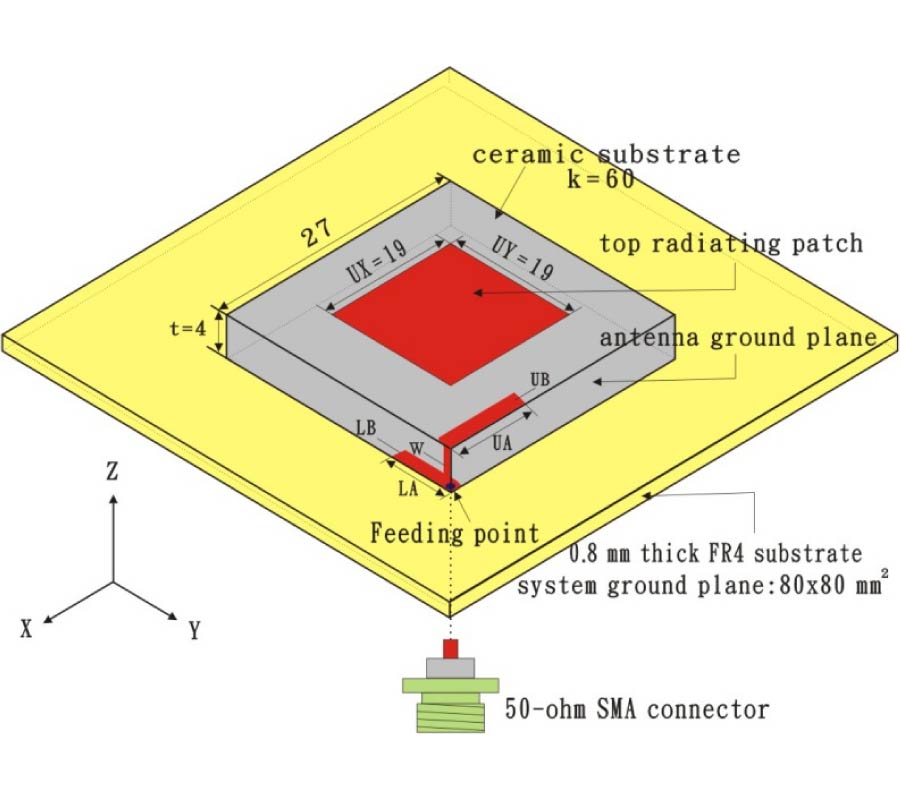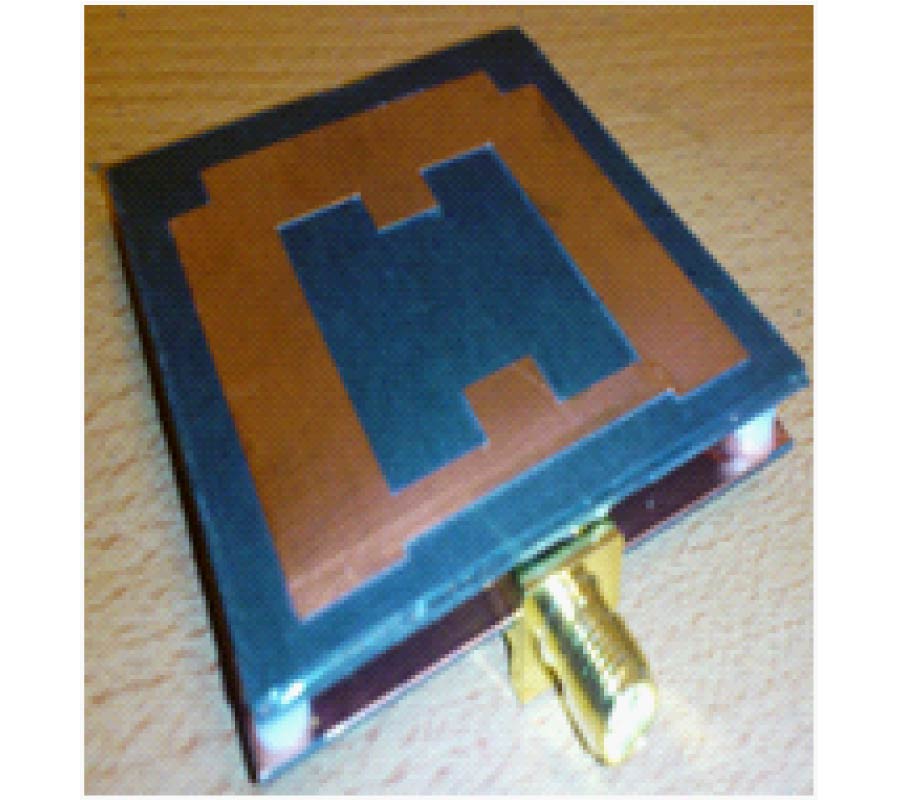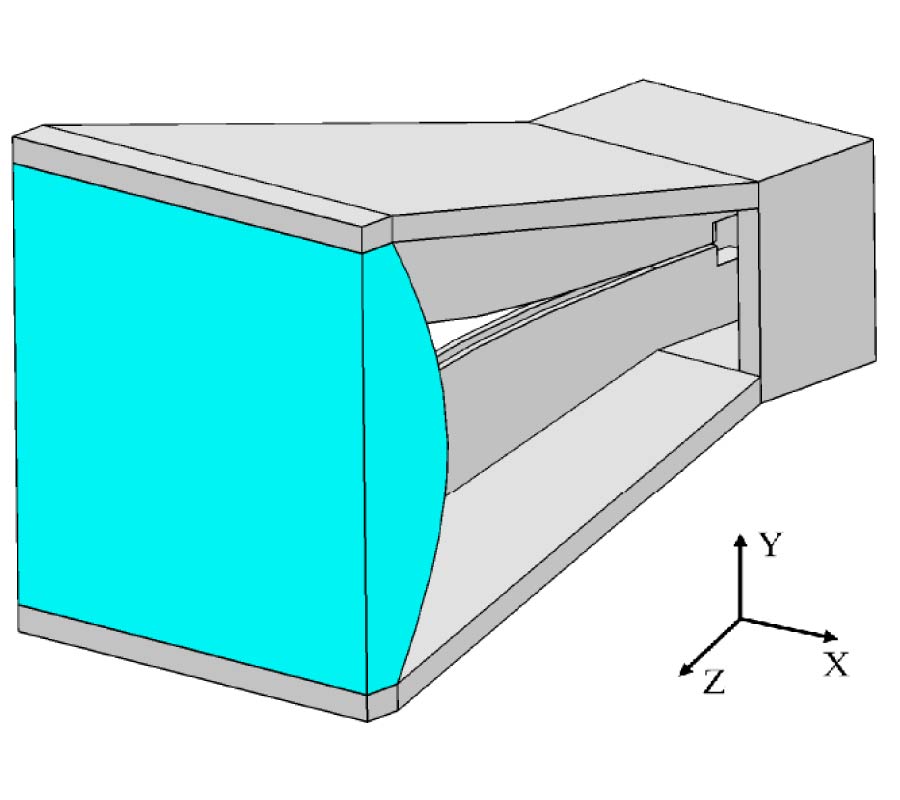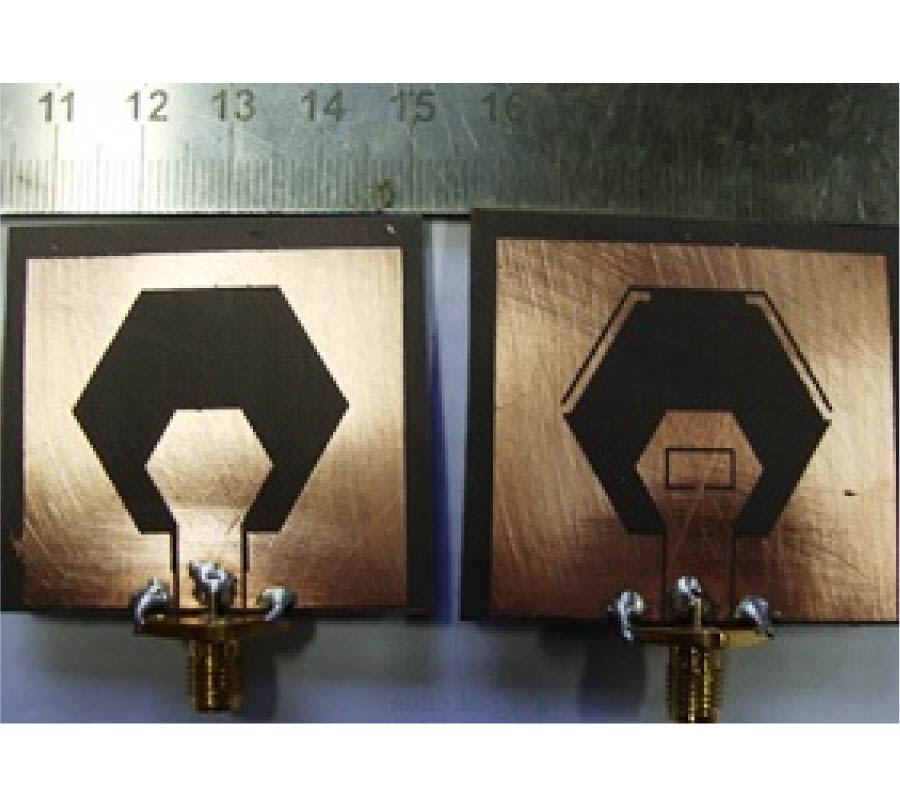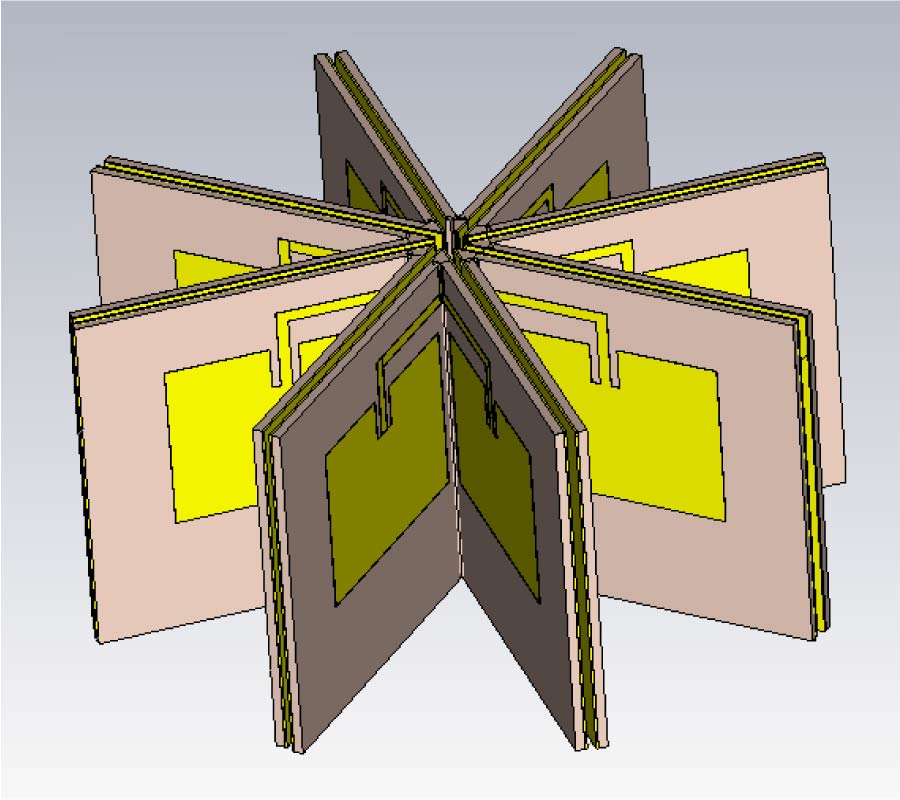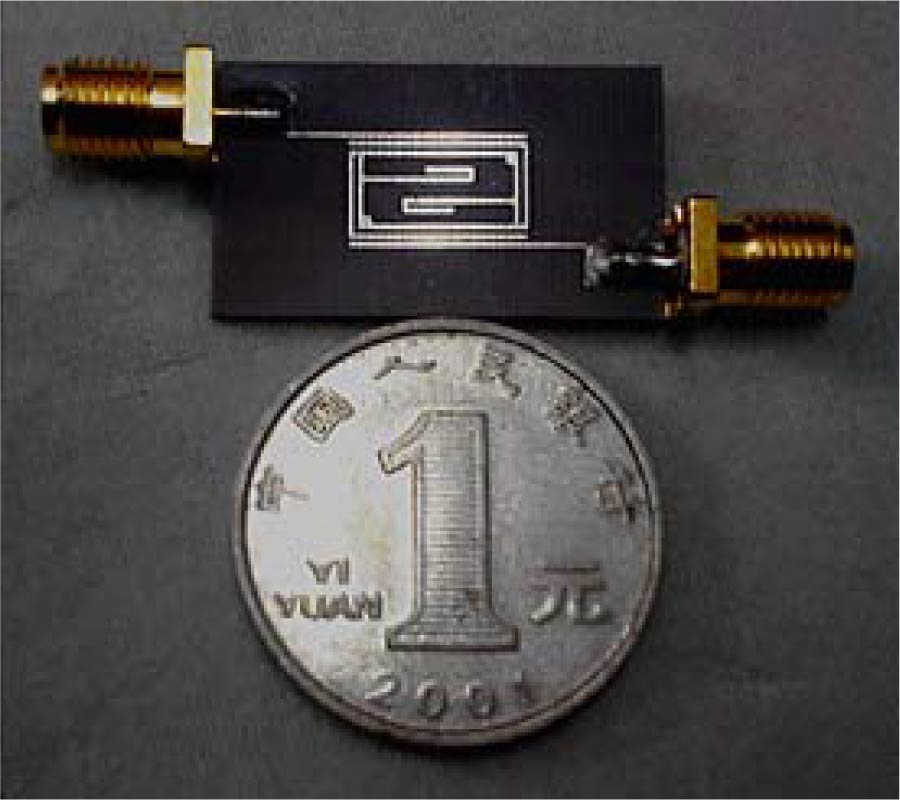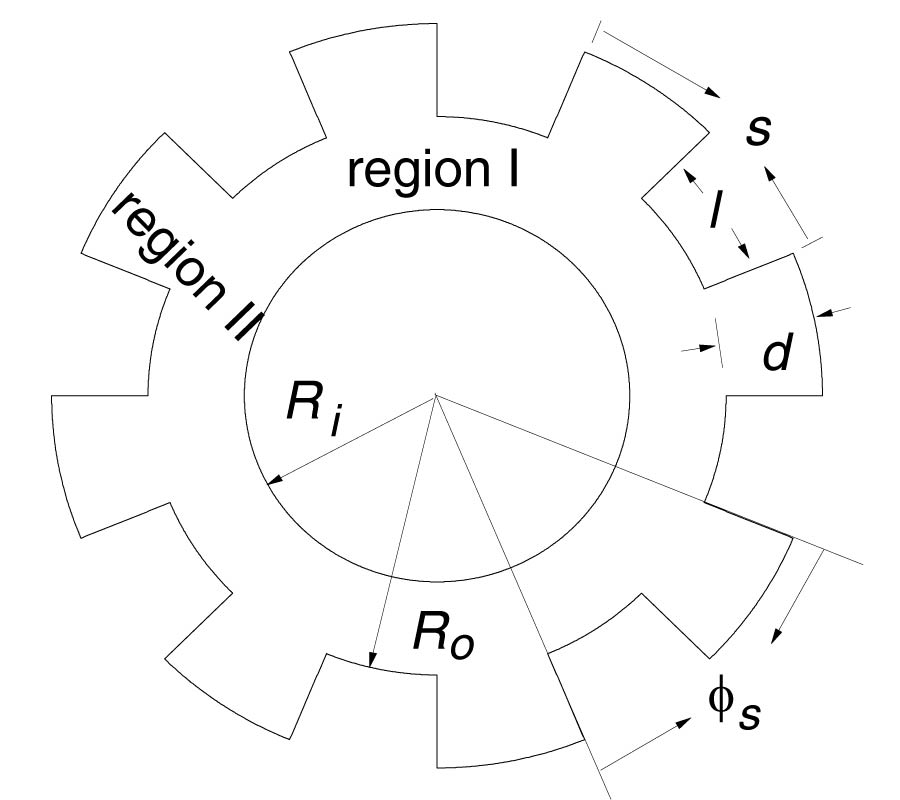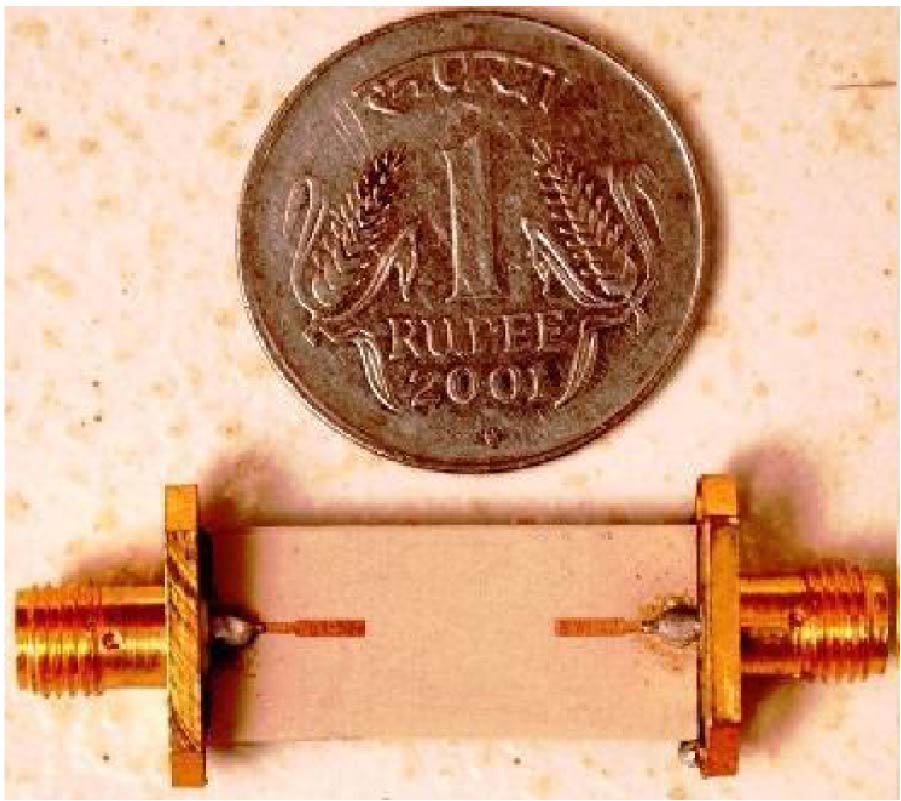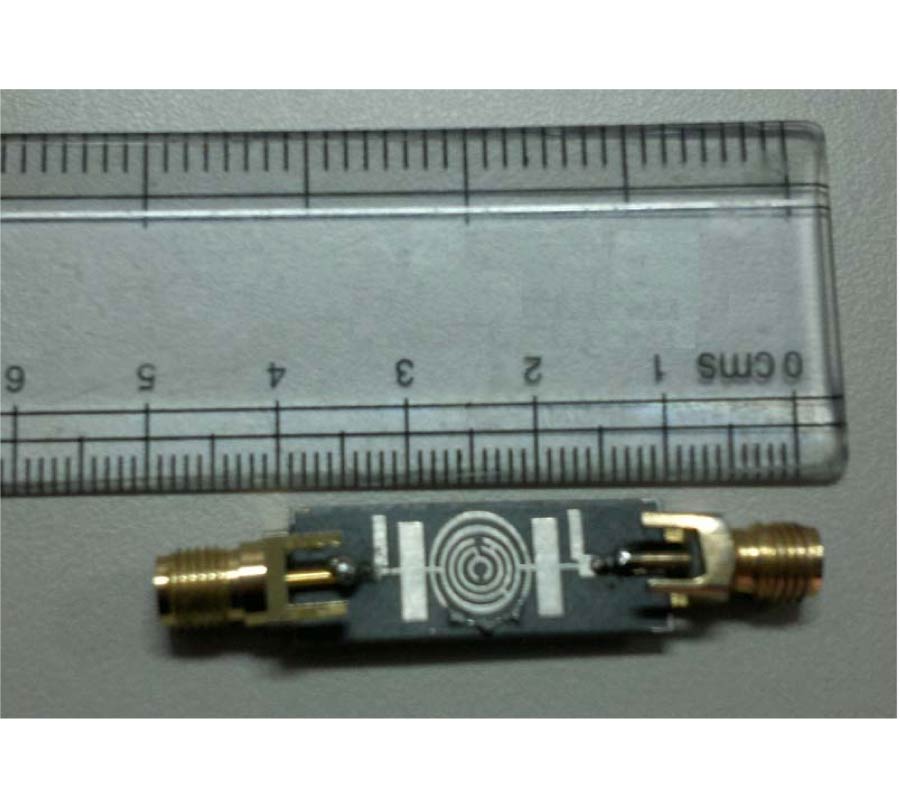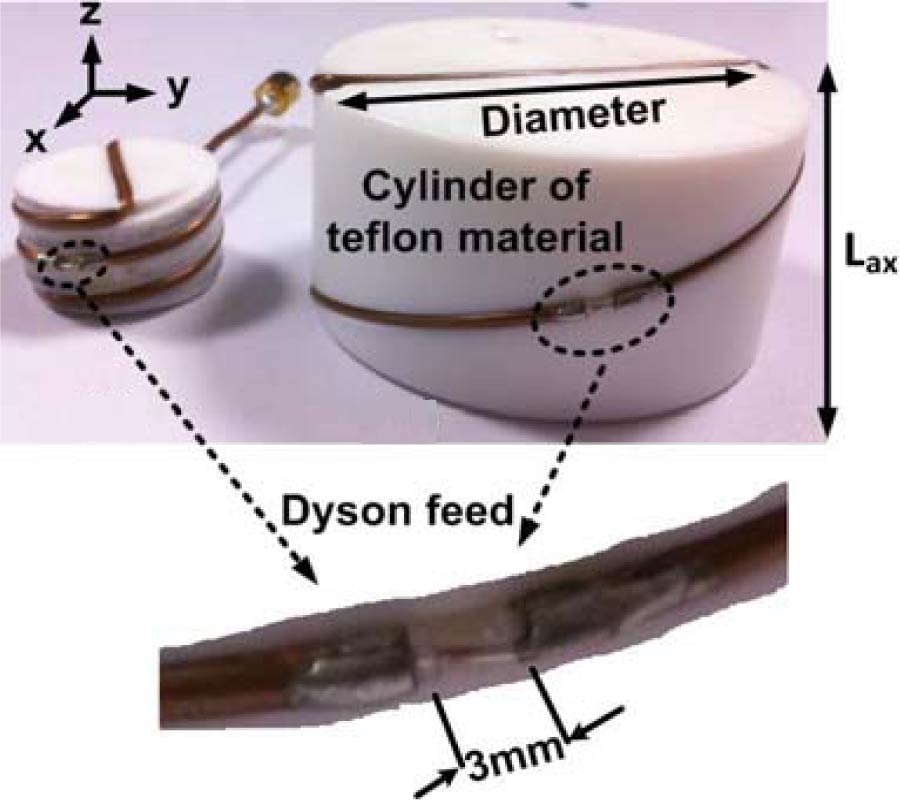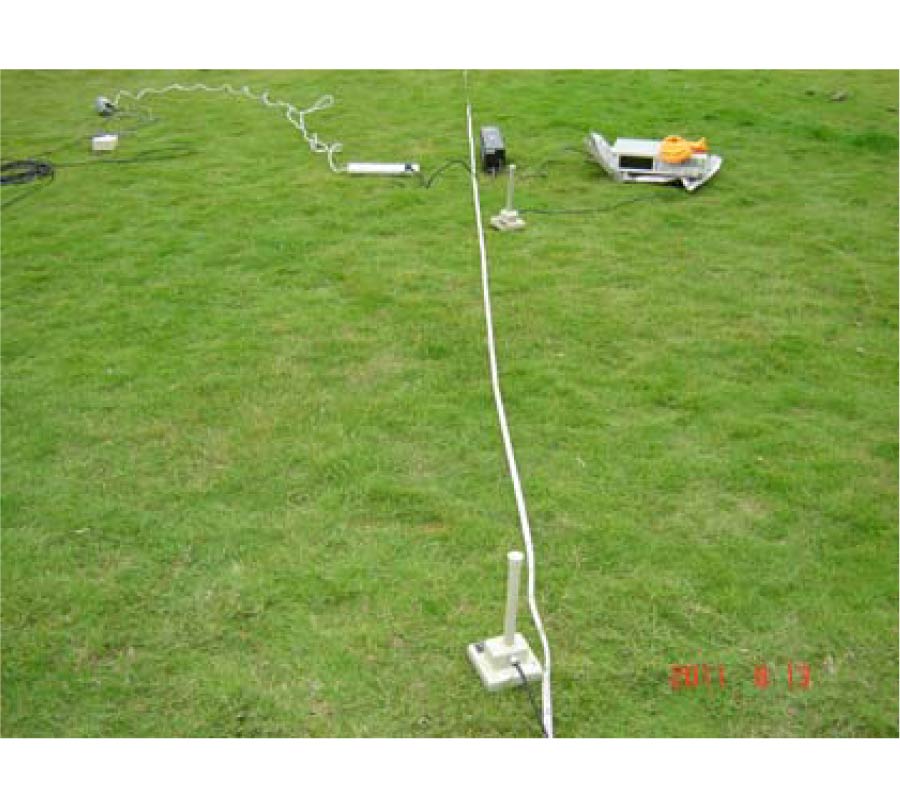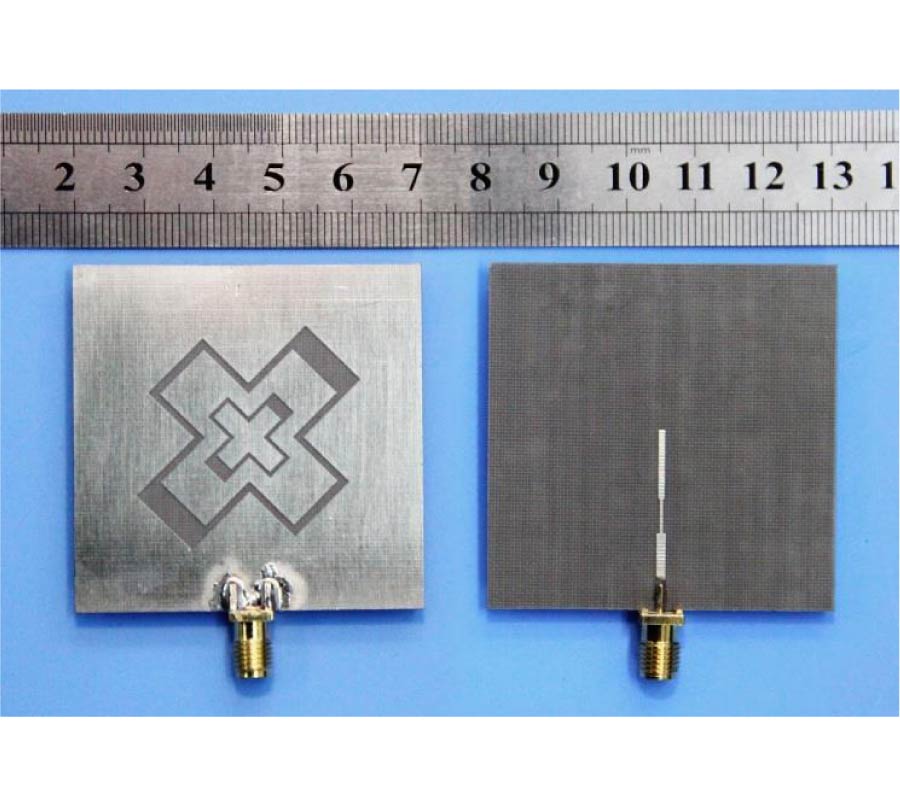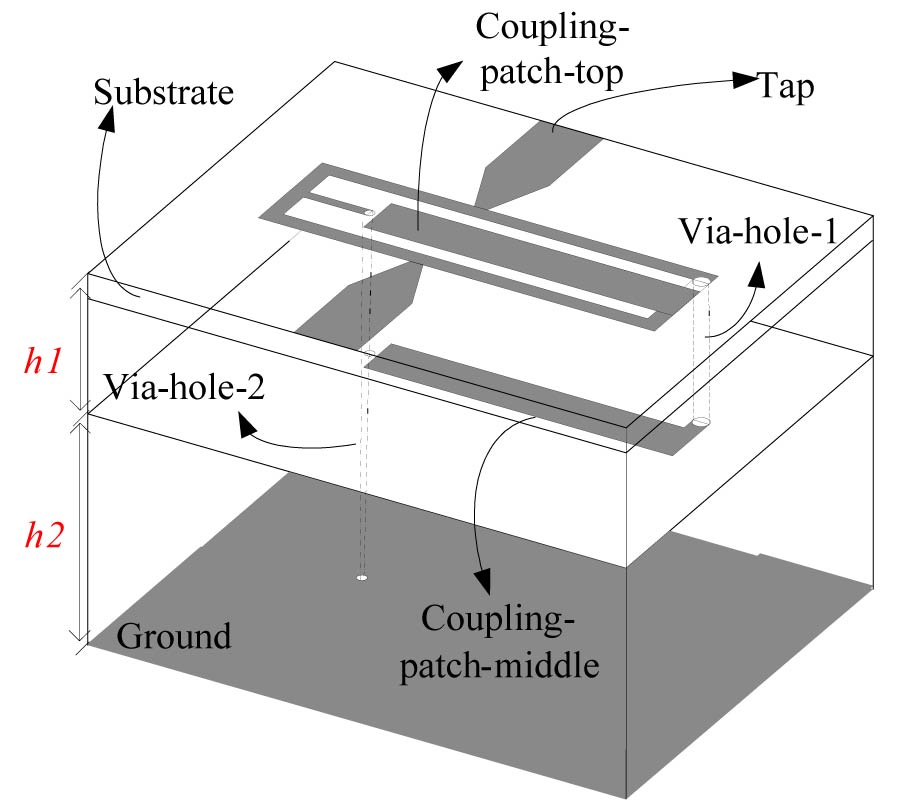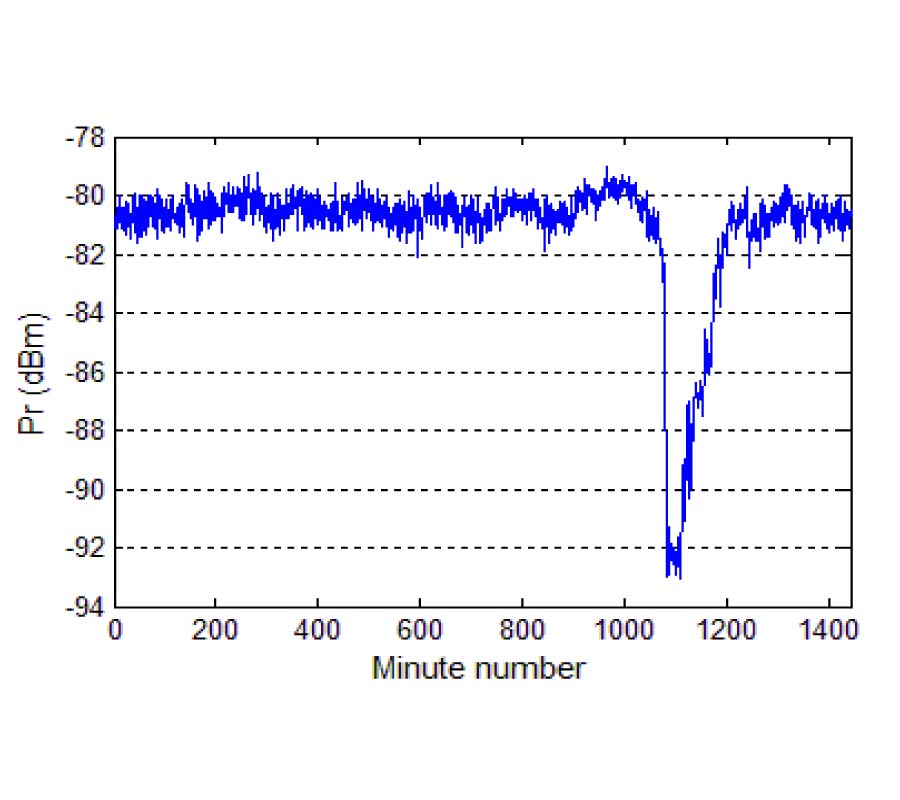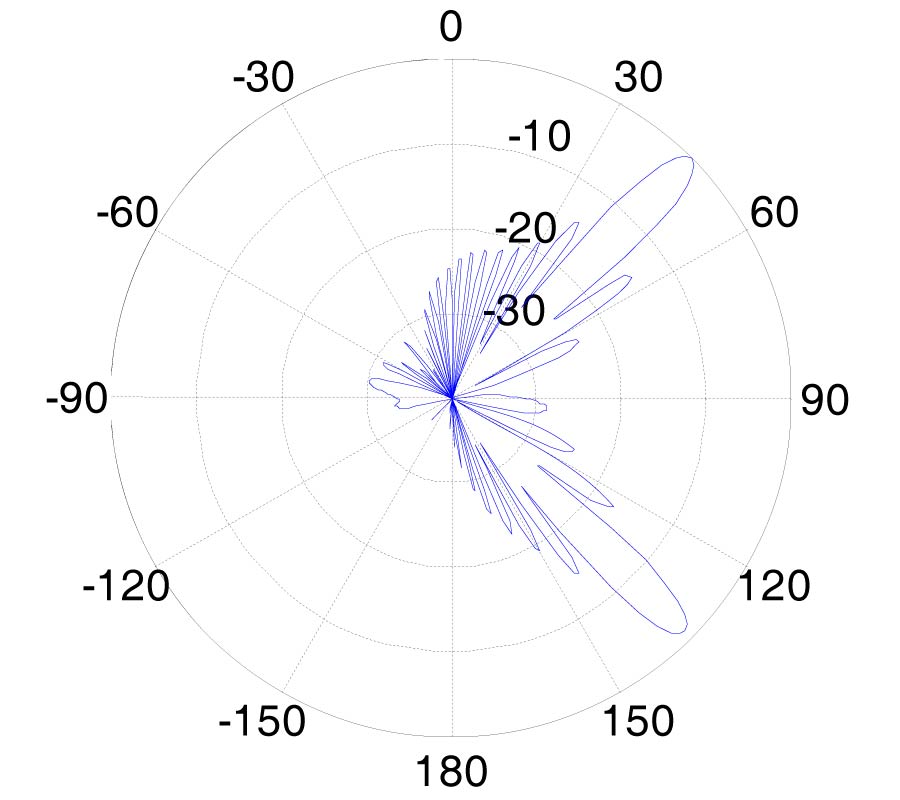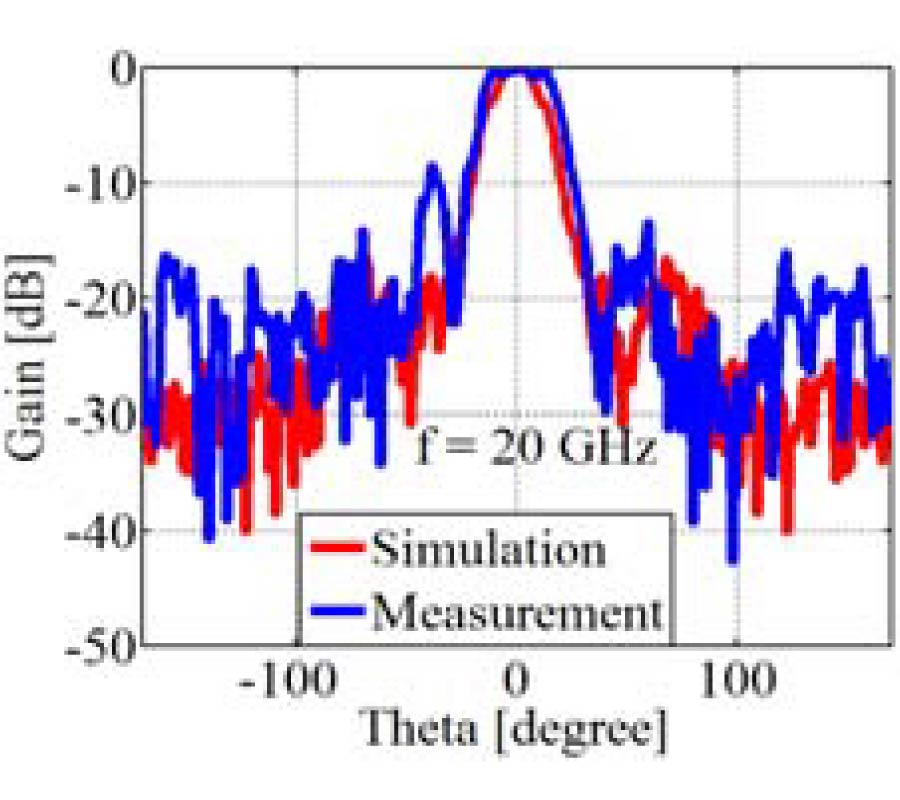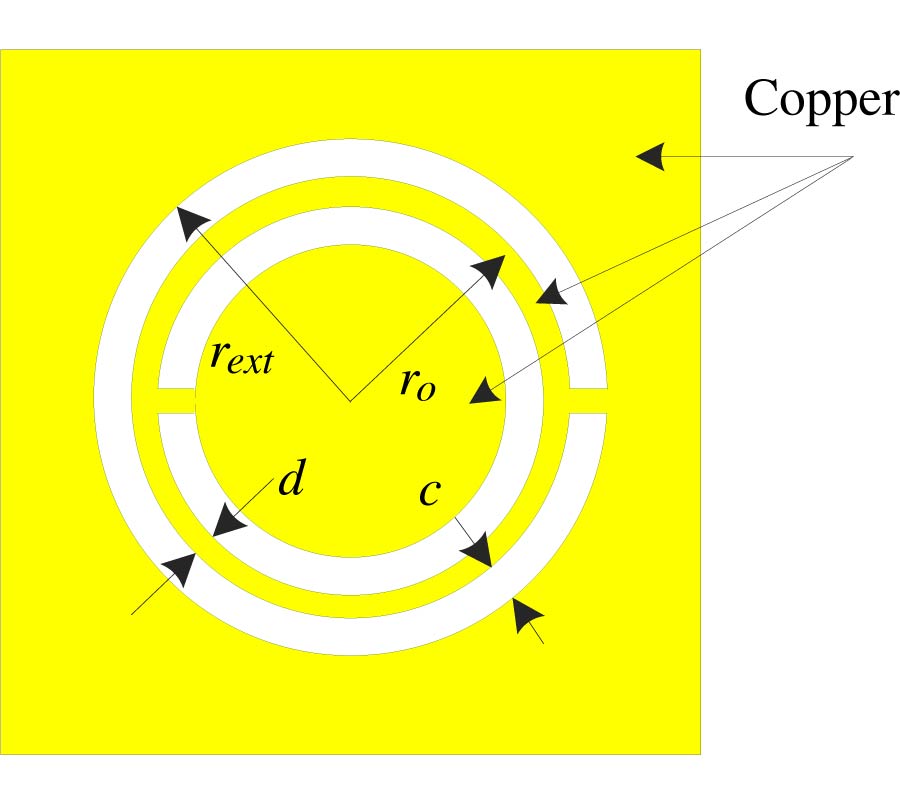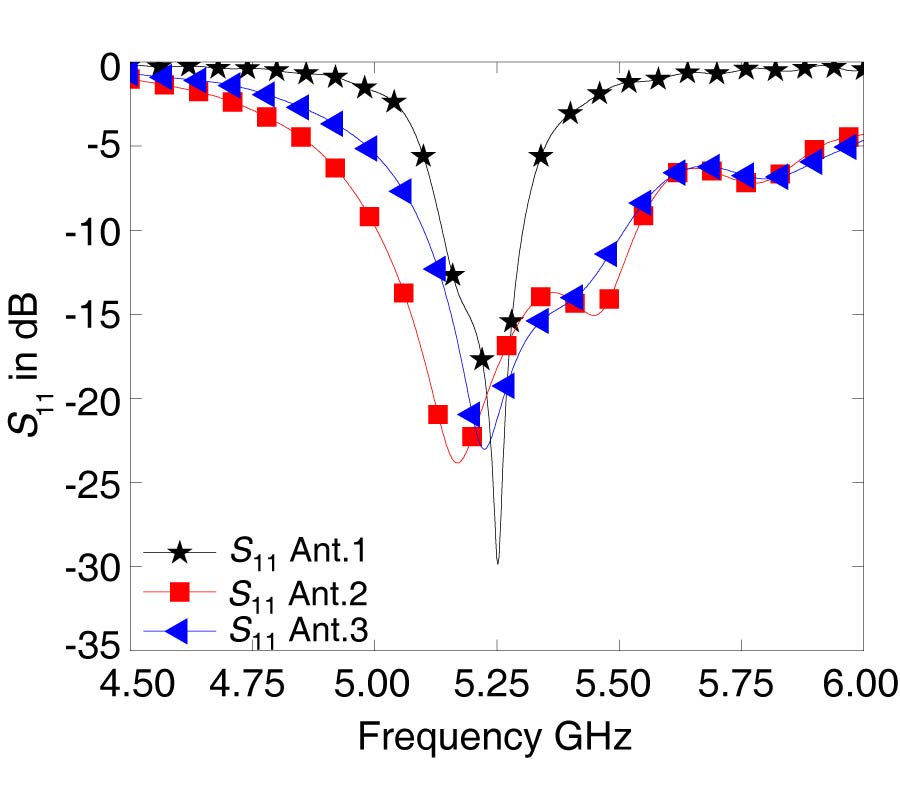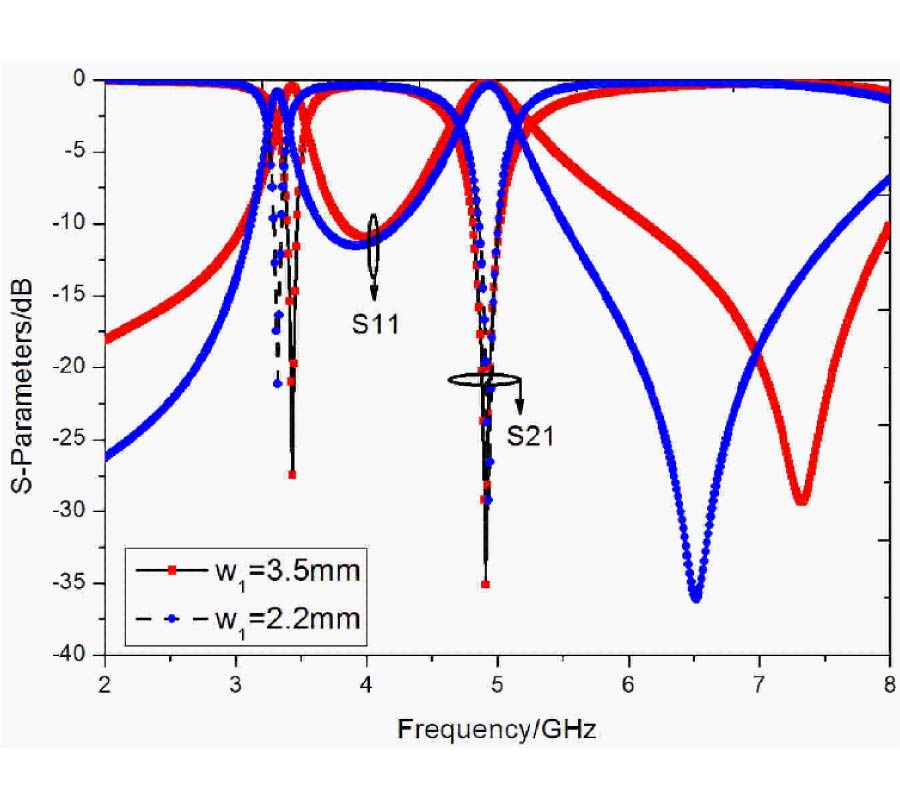A Compact Multilayer Configuration Filter with Inner Mixed Electric and Magnetic Coupling
Wei Tang,
Jun He and
Xiaobo Yang
A novel cascade microstrip filter with mixed electric and magnetic coupling is proposed and examined. For the first time, we designed a novel multilayer configuration resonator with a compact size. Compared with conventional open-loop filter, the size decreased 75%. First, using novel multilayer configuration resonator instead of monolayer configuration resonator, the size decrease about 45%. Meanwhile, two microstrip patches can be served as inner coupling capacitor, which create and strengthen electric field. Owing to this inner coupling, the size of filter can be further reduced. What's more, with a section of high characteristic impedance transmission line connected to the ground though a via-hole, it can be served as coupling inductor and create main magnetic filed, base on this structure mixed EM coupling is realized, and can generate additional transmission zero. That's means adopt low-order filter can achieve same characteristic as high-order filter. Based on the above solutions, the filter size can be sharply decreased to 12.5 mm×7.7 mm (i.e.,0.05λg×0.033λg). Furthermore, advantages of using this type filter are not only low insert loss, but also increased attenuation out-of-band with controllable transmission zeros.
